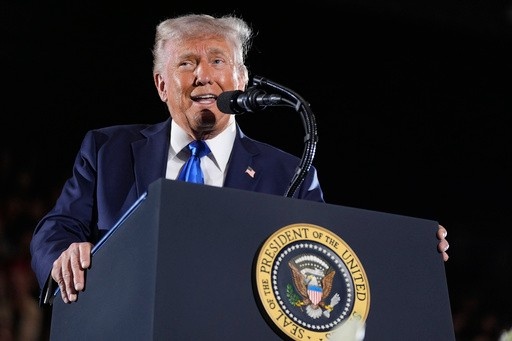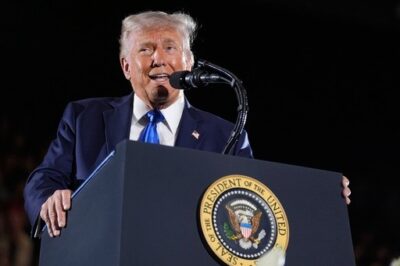
The Trump administration has unveiled its proposed $5 trillion budget for fiscal year 2026, signalling a significant pivot in U.S. policy priorities. Central to the proposal is a steadfast commitment to national defence, coupled with substantial reductions in domestic programs, including those addressing climate change and diversity initiatives. This budget underscores the administration’s focus on what it deems essential for national security and economic growth.
Defence Spending: Maintaining Military Strength
At the heart of the proposed budget is a request for $892.6 billion in national defence spending, maintaining the same level as the previous fiscal year. This allocation aims to bolster military capabilities, enhance deterrence, and strengthen national security. However, some lawmakers express concern that, when adjusted for inflation, this flat funding may represent a real-term decrease, potentially limiting military options and negotiating power. The funding encompasses the Department of Defence and other related national security programs, with a broader $150 billion defence package planned as part of Trump’s $5 trillion tax cut initiative, which is expected to add $5.7 trillion to the national debt over ten years.
Reallocation of Funds: Prioritizing Military Over Domestic Programs
In a bid to realign federal spending, Defence Secretary Pete Hegseth has directed the Pentagon to identify $50 billion in cuts from existing programs. These savings are intended to fund President Trump’s military priorities, including the development of a U.S.-based Iron Dome missile defence system. The cuts target what the administration considers “excessive bureaucracy” and programs addressing climate change or diversity, equity, and inclusion (DEI) initiatives. Critics argue that such reductions could undermine efforts to combat climate change, which the Pentagon has identified as a “threat multiplier” affecting national security.
Immigration Policy: Ending Protections for Venezuelan Migrants
The proposed budget also includes a controversial move to end Temporary Protected Status (TPS) for approximately 350,000 Venezuelan migrants. Homeland Security Secretary Kristi Noem’s decision to revoke TPS was blocked by a U.S. District Judge, who cited concerns about discriminatory motives. The administration has appealed to the U.S. Supreme Court, arguing that the lower court’s decision undermines executive authority over immigration policy. This move has sparked debate over the balance between national security and humanitarian considerations.
Trade Relations: Tensions with Canada and Japan
The proposed budget coincides with ongoing trade tensions between the United States and its allies. In March 2025, President Trump imposed a 25% tariff on all Canadian imports, excluding energy products, which were subjected to a 10% tariff. In response, Canadian Prime Minister Justin Trudeau announced 25% tariffs on $30 billion worth of U.S. goods. Additionally, Japanese Finance Minister Katsunobu Kato revealed that Japan’s over $1 trillion in U.S. Treasury holdings could serve as leverage in ongoing trade negotiations with the United States. These developments indicate a shift towards protectionist policies and a re-evaluation of longstanding trade relationships.
Economic Implications: Job Market Resilience Amid Tariffs
Despite the administration’s protectionist stance, the U.S. job market has shown resilience. Tech giants Microsoft and Meta have reported strong earnings and plans for AI investment, contributing to a rebound in global markets. However, concerns persist about the potential long-term effects of escalating tariffs on trade partners, which could impact U.S. exports and economic growth. Analysts warn that protectionist policies might backfire, as seen during the Smoot-Hawley era, potentially leading to retaliatory measures that could harm the U.S. economy.
Conclusion: A Budget Reflecting Strategic Priorities
President Trump’s proposed 2026 budget reflects a strategic shift towards prioritizing national defence and economic growth, while scaling back domestic programs deemed non-essential. While supporters argue that these measures are necessary to strengthen the nation’s security and economic standing, critics caution that such cuts could have unintended consequences, particularly in areas like climate change and immigration policy. As the budget undergoes congressional review and debate, it remains to be seen how lawmakers will balance these competing priorities to shape the future direction of U.S. policy.








































Leave a Reply